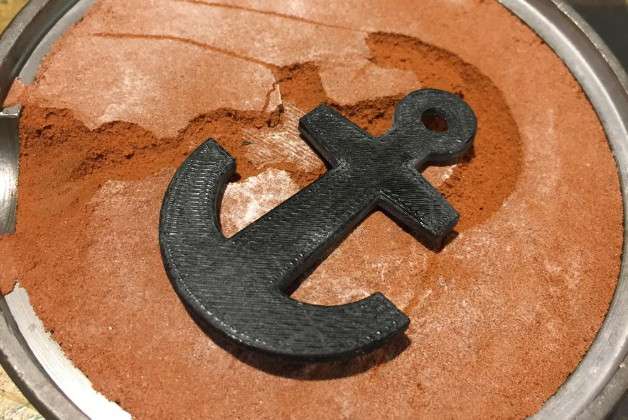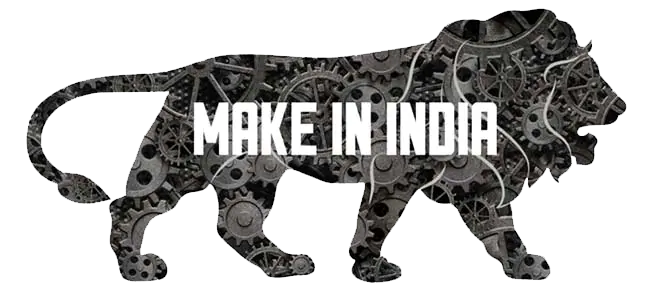Clay moulds were popular in ancient China since the Shang Dynasty (c. 1600 to 1046 BC). The ancient Chinese prepared the famous bronze sacrificial vessel or Houmuwu ding (c. 1300 BC) by using clay moulds. The Assyrian king Sennacherib (704–681 BC) preferred clay moulds (sand casting) to create massive bronze sculptures (30 tonnes). He did not use the traditional method of using lost-wax casting.
This image was taken as a reference from obj.shine.cn
Vannoccio Biringuccio recorded the sand casting moulding method in his book (p.1540).
Ford automobiles set a record by producing 1 million cars in 1924. They consumed 1/3rd of the entire casting production (US). The demand for casting efficiency increased with the popularity of the automobile industry. It was during and after the First/Second World Wars, the demand of casting grew multi-fold. There was a huge demand in the automobile and machine building industries. The demand stimulated innovations in mechanization and automation in sand casting process technology.
In the sand casting process, molten metal is poured into a cavity-shaped sand mould. The molten metal then solidifies. Sand particles are held together with an inorganic binder by a mould. The sand mould is then broken open to remove the casting once the metal has cooled to room temperature. In sand casting, the main advantage is the low cost of the mould. When it comes to permanent mould casting, the difference is the huge expense. The process is suitable for castings with intricate shapes. But, it does not permit close tolerances. Also, the mechanical properties of the casting are low because of the coarse grain structure. The mould gets this property due to the slow cooling rate.
There are 6 main steps involved in Sand Casting.
1. Place Mould Pattern in Sand
Sand casting begins with the placement of the mould pattern in sand. The size and shape of the casting are directly related to the mould. A company needs to create metal components/products with specific sizes/shapes. Then, either they have to create new moulds or outsource the work to a third party vendor.
2. Set Up the Gating System
A gating system is used in almost all casting processes, including sand casting. Mould pouring cups and gates are used to funnel molten mould into the cavity of the mold. A manufacturing company will set up a gating system after placing the mould pattern in sand.
3. Remove the Mould Pattern
The gating system then allows companies to remove the mould pattern from the sand. This step is now irrelevant. A mold pattern is placed inside sand, which takes the shape of the mould pattern. This pattern then gets removed in the future.
4. Pour Molten Metal Into Mould Cavity
The molten metal can now be poured into the mould cavity. There are a variety of metals and alloys that can be cast using sand casting. They are iron, steel, aluminum, bronze, magnesium, zinc and tin.
Manufacturing companies may need to heat metal or alloys up to 3,000 degrees Fahrenheit. The temperature may vary depending on the specific metal or alloy. After the metal or alloy has become liquid, it is poured into the mould cavity.
5. Wait for the Metal to Cool
Then, manufacturing companies must wait for the molten liquid to cool in the mould cavity. The cooling times for different metal types vary. When the molten metal cools, it will return to a solid state.
6. Break Open Mould to Remove the Metal Casting
Now comes the sixth and final step of sand casting. The resulting metal casting is removed from the mould. Patterns for moulds are typically reusable, but the actual moulds cannot. Sand casting requires manufacturing companies to create a new mould for each new metal product or component.
Benefits of using the Sand Casting process are:
- It can be used to fabricate parts in almost every metal, including those with a high melting point
- Easily scaled
- Geometries which have thin-walled sections
- All sizes/weights (castings)
- Cost-effective production.
This image was taken as a reference from engineering.product.design.com
Applications of Sand Casting
It is difficult to comprehend the different technologies that rely on sand casting. Casting is an ideal manufacturing process for almost any complex part. It is used in almost every modern technology. The following points are some products that get manufactured via sand casting process. So, you can, with ease, guess the many possibilities of this process.
The products are:
- Many kinds of pistons and valves
- Blowers/impellers
- Cams, bushing, and bearings
- Electronic equipment
- Gas/oil tanks
- Most hardware
- Engine blocks




